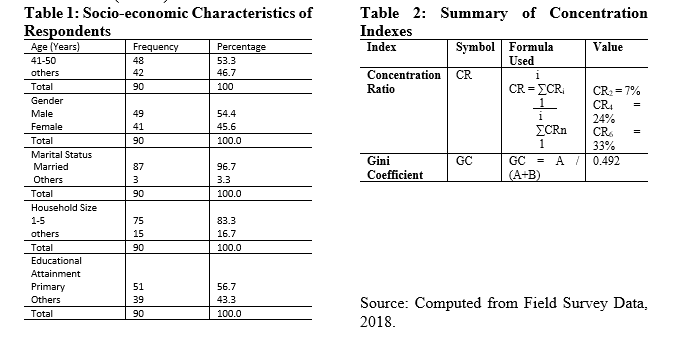MEASURES OF MARKET STRUCTURE AND SOCIO-ECONOMIC CHARACTERISTICS OF FISH AND SHRIMPS MARKETERS IN AKWA IBOM STATE, NIGERIA
This study assessed the measure of market structure and socio-economic characteristics of fish and shrimps marketers in Akwa Ibom State, Nigeria. Akwa-Ibom State has an official population figure of about 3.9million (NPC, 2006). It has an area of 7,081km2 with its Atlantic Ocean Coastline stretching to 129km from Oron in the East to Ikot-Abasi in the West. The State is located in the Coastal Southern part of Nigeria, lying between latitudes 4032’N and 5033’N; and longitudes 7025’E and 8025’E. It is bordered on the East by Cross River State, on the West by River State and Abia State, and on the South by the Atlantic Ocean. Multistage sampling technique was used to collect primary data from 90 respondents in the study area. Descriptive statistics, Concentration Ratio were used to analyze the set objectives.
The result of the socio-economic characteristics of the respondents revealed that 53% were within the age range of 41 to 50 years. About 54% of the respondents were male while 46% represent female. The result showed that 97% of the respondents were married. Also, respondents with household size of 1 to 5 persons were recorded to be 83%. Moreover, 57% of the respondents had primary school education implying that they were literates (Table1).
From the result of the market concentration, the Gini Coefficient was 0.492 as presented in Table 2. This implies that there is inequality of shares of income in the study area. It is therefore recommended that, associations/organizations that will promote free market day without market tax to improve competitive level in seafood marketing should be encouraged. Hence, reduced oligopoly.
